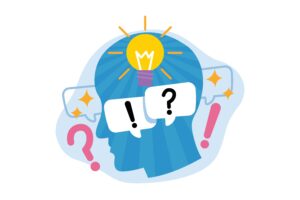Active Listening In Sales: the Missing Element To Selling Success

Is sales still a viable profession today? Is it something needed or that people even want to do? Many who are currently in sales positions or are considering a role in sales are beginning to question what the job really means today and whether it’s one they can be proud of — especially when it feels like their whole purpose can feel like it’s to pressure or coerce buyers into doing something. At the same time, in this era of digital transformation and increasing commoditization, a growing chorus from both within and outside the world of sales seems to be floating the idea that maybe we just don’t need salespeople anymore and that things like conversations and active listening in sales are passe. Just leave it to the algorithms, the AI and other online and self-serve tools.
In fact, talented, professional salespeople have never been more necessary. While the selling environment has undergone some pretty dramatic changes in recent years, if anything, they’ve only heightened the need for sales professionals who care about, can connect with and actively listen to their customers. The problem is, too many salespeople and sales leaders alike have been misled and shortchanged by flawed definitions of what selling is really about and what it takes to be successful in the role.
This is one of the reasons Mike Esterday and I were motivated to write our new book, Listen to Sell. We’ve seen what happens when salespeople fall into the trap of a sales process that’s built around winners and losers, of following a script to push people into a deal and turning the heat up to hit those numbers, even if the behaviors required of you conflict with who you are and what you value. It inevitably leads to dissatisfaction, burnout, and squandered potential.

Listen to Sell seeks to upend the negative stereotypes and help salespeople not only perform at higher levels but also feel pride in what they do every day. While many of the principles are timeless, they’ve also never been more relevant. With the rise in technology and automation, customers are screaming out for something only talented, professional salespeople can offer: the human connection.
Mastering the Human Side of Selling
There’s no doubt that the sales ecosystem has become infinitely more challenging. Most buyers today are well-versed in your products and services before they ever come in contact with you. In fact they are more than two-thirds the way through the buying process before initiating contact with a vendor. As a result, once they do come in contact their expectations of you are higher than ever. The sales cycle has grown longer and more complex, and in many cases, you’re dealing with numerous, often unpredictable stakeholders. And then there’s all the tech, from sales enablement tools, CRMs, automation and virtual selling technologies to the massive amounts of data and analytics to wade through.
These changes haven’t made salespeople obsolete, however. On the contrary, one of the underlying themes that was continually reinforced for us while we wrote this book is that the role of the sales professional has never been more purposeful. We argue that there’s never been a better time to be in sales, not in spite of but because of what’s happened over the past decade.
There is a catch. To be effective, salespeople need new tools, new skills and more training. The key, though—the big secret to sales success—lies in mastering the human elements in sales. These are universal people principles and behaviors that apply no matter what changes occur or challenges exist in the broader industry and environment.
Here’s the simple reason why: Customers want to buy from people. Especially when it comes to complex B2B sales, they’re craving the forward-looking insights and personal interactions that only a human can provide. Yes, they can go online and access all kinds of information about your products and services, your company and your competition. That’s actually great news for salespeople. If you’re in sales, you’re now freed up to spend your time on the high-value aspects of selling that buyers are looking for and that differentiate you from all the others out there. As we write in the book:
When a product can be ordered online with a click, robots can step in and take care of the sale. But where there are complexities related to the human side of selling, it takes human-focused approaches. It takes coaching, emotional intelligence, and self-awareness. It takes you to make the journey mutually beneficial, fulfilling, and successful.
This is particularly heartening news for those existing or aspiring salespeople who are having doubts about the role or wondering whether it can be a fulfilling career. Now more than ever, the opportunities are available to you to become a valued, trusted and respected partner to your clients. And becoming that partner requires active listening in sales.
What it Means to Listen to Sell
As we’ve talked about before, for some people, “sell” is a four-letter word. It comes loaded down with the baggage of negative experiences and stereotypes, which are often the result of training, coaching and performance standards that emphasize coercive tactics, memorizing scripts and profiting at the customer’s expense.
In fact, the most successful salespeople have a completely different definition of and mindset about what selling is. In the book, we define selling as uncovering needs, meeting needs and creating value for people. We’ve found that salespeople who view selling through this lens approach their job in a very distinctive way. They are driven by purpose and values. Because of this, they feel good about what they’re doing and the positive impact they can have, and as such, they’re highly motivated to achieve more, for themselves and their customers. Their customers, in turn, value, respect and trust them, which is a confidence boost in and of itself.
At the root of this human-centered approach is something we’ve identified as the essential thread that runs throughout the entire relationship: active listening in sales. You have to be present and fully hearing and what your customers are saying if you want to be able to understand and address their needs and create value that goes beyond communicating product information or completing a transaction.
Salespeople need to be far more than just information sources. They need to show respect and empathy for others in order to connect with people on a human level, uncover out what value looks like for them and then help them make that value happen. That’s the value today’s salespeople can bring to the equation. And that’s what active listening in sales is all about.
Active listening in sales isn’t just limited to conversations with customers, however. There are three critical types of conversations a salesperson has, and the book is designed to help salespeople become more effective listeners within the context of each of them: the conversations with yourself as well as those with your customer and your coach.
While the conversation with your customer is about building your skillset, the conversation with yourself is about reframing your mindset. The right skillset and the right mindset are both equally necessary, and the coaching conversations play an essential role in developing and reinforcing them. We begin with the conversation salespeople have with themselves, and that’s because our research has found that achievement drive, self-belief and attitude are keys to selling success. Salespeople have to be more tuned in to the messages they’re communicating to themselves, day in and day out, if they want to uncover the hidden roadblocks within themselves, shift their perspective and unlock their full potential.
The most significant variable in your sales success is you.
This is one of the most important points that I hope every reader takes away from reading our book. Time and again, research shows that there’s a wide gap between what customers believe and what companies tell them. This is why trust and authenticity are two of the biggest differentiators professional salespeople bring to the table. Sure, there are times when a customer wants a quick, transactional, self-service experience; but as mentioned above, there are far more examples of instances where all the customer really wants is someone to speak human to them. This is the value salespeople bring beyond delivering the greatest new product.
There’s another aspect to this point as well. As a salesperson, your belief in yourself—in the value you provide and what you can achieve—affects everything. More than any factor, your mindset will either make you successful or prevent you from fulfilling your true potential.
We wrote Listen to Sell because we wanted to celebrate sales as a profession and the salesperson as a respected, valued partner. We firmly believe this is a great time to be in sales and that you have the opportunity to build a rewarding career in sales, one you can be proud of. The concepts, practices and exercises we’ve outlined are timeless, but they do take discipline, an open mind and intention. As we write in the book, “You have the inner power to achieve any goal that you can condition yourself to accept as within your capabilities. You just need to decide… and then do the work.”
In our experience, it’s more than worth it. A strong combination of mindset, skillset and coaching with attention paid to active listening in sales will put you on the path to truly exceptional sales performance.
Listen to Sell: How Your Mindset, Skillset, and Human Connections Unlock Sales Performance (from Page Two Books) is now available. Order your copy on Amazon or wherever you get your books. Visit ListentoSellBook.com for more information, related content from the authors and to inquire about bulk purchases and speaking opportunities.

Executive Partner & Board Member
Related Blog Posts



